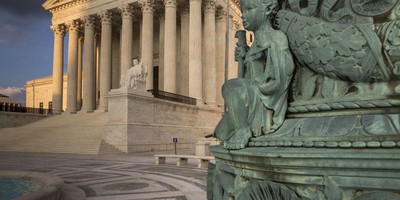Andrew Sullivan cited an op-ed of mine last week regarding the complexity of the tax code.
One person commenting on Andrew’s article said:
I am a corporate tax lawyer with 25 years’ experience. I can’t prove it, but in my experience the vast majority of the complexity of the tax law has nothing to do with tax breaks. It has to do with providing precise rules to deal with an infinite variety of structures and transactions, in the face of taxpayers and their tax counsel who are determined to minimize their tax bill. Rules relating to tax breaks are insignificant in volume compared to the rules relating to consolidated tax returns, corporate reorganizations, foreign tax credits, taxation of the foreign subsidiaries of U.S. corporations (Subpart F) and hundreds of other things.
The Cato Institute article you link to is filled with lies and half-truths (which is about what I would expect from a Cato Institute article on taxes). The ‘tax rules’ do not span 73,608 pages and do not cover nine feet of shelf space. The standard CCH edition of the Code is 5,500 pages long, but that is highly misleading. That volume is targeted at tax practitioners and includes old statutory provisions that have been repealed or revised. Because of the obscure way that the regs are paginated, it is not easy to tell how many pages they are, but I would estimate it at about 30,000 pages, which includes proposed regs and the preambles to regulations. The entire set of Code and regs takes up about 18 inches on my shelf. To give you an idea about how much the Code and regs have expanded over the years, my set from 1987 takes up around 10 inches.
The volume that Chris Edwards describes in the Cato article probably refers to the bound CCH Standard Federal Tax Reporter, which may indeed cover nine feet and contain 73,608 pages. However, that volume is exclusively designed for practitioners and includes not only the Code and regs, but also commentary written by CCH and annotations from case law.
I don’t understand why people make such snarky comments when they clearly haven’t done their homework. Let me note first that I mainly agree with the writer’s first paragraph, at least with respect to the business tax code. He points to what I call “homemade” loopholes, which are different from the loopholes specifically legislated by Congress for special interests. Homemade loopholes stem from the inherent complexity of taxing business income, and they are an important reason why chopping the high U.S. corporate tax rate would create a large dynamic response from businesses. That is, it would not be worth the cost or legal risk for businesses to invent so many tax avoidance tricks if we had a much lower corporate tax rate. If we cut the rate, the U.S. corporate tax base would expand automatically as homemade loopholes shrank.
Recommended
Now, about those “lies.” CCH itself publicizes the data I used showing federal tax rules spanning 73,608 pages. The CCH folks have been publishing information on federal taxation since 1913, so they know what they are talking about. Note that I said tax “rules” not tax “code.” The total rules that tax practitioners have to take into account are lengthier than just the code and regulations, and that’s what the broader CCH publication captures.
By the way, my “nine feet of shelf space” comes straight from the IRS National Taxpayer Advocate. This official watchdog agency cites (on pages 4/5) the nine-foot CCH Standard Federal Tax Reporter as one of their metrics of tax complexity. In the past, I’ve called CCH analysts to discuss with them the meaning of their published page counts.
It is true that average households don’t get into the nitty gritty of those nine feet of rules. But many thousands of highly paid professionals do have to on behalf of their individual and business tax clients. That is part of the reason why the current federal tax system is so wasteful. It consumes the time and energy of a huge number of skilled people, probably including the grumpy tax lawyer who called me a liar.
If the CCH page count doesn’t convince Mr. Grumpy that the tax system is wasting a lot of human effort, here is one more IRS Advocate factoid for him to consider (page 5):
Two companies publish newsletters daily that report on new developments in the field of taxation; the print editions often run 50-100 pages and the electronic databases contain substantially more detailed information.
























Join the conversation as a VIP Member